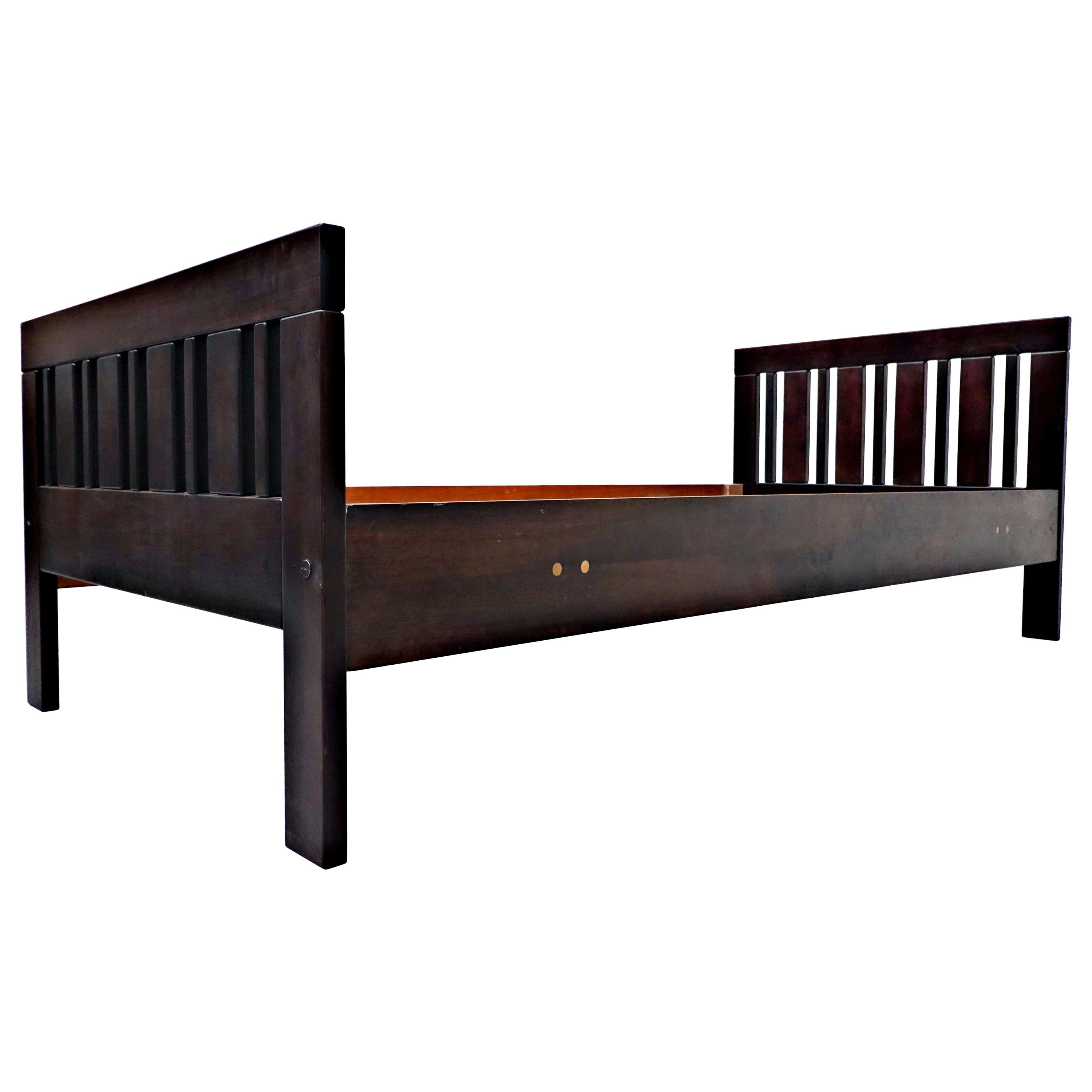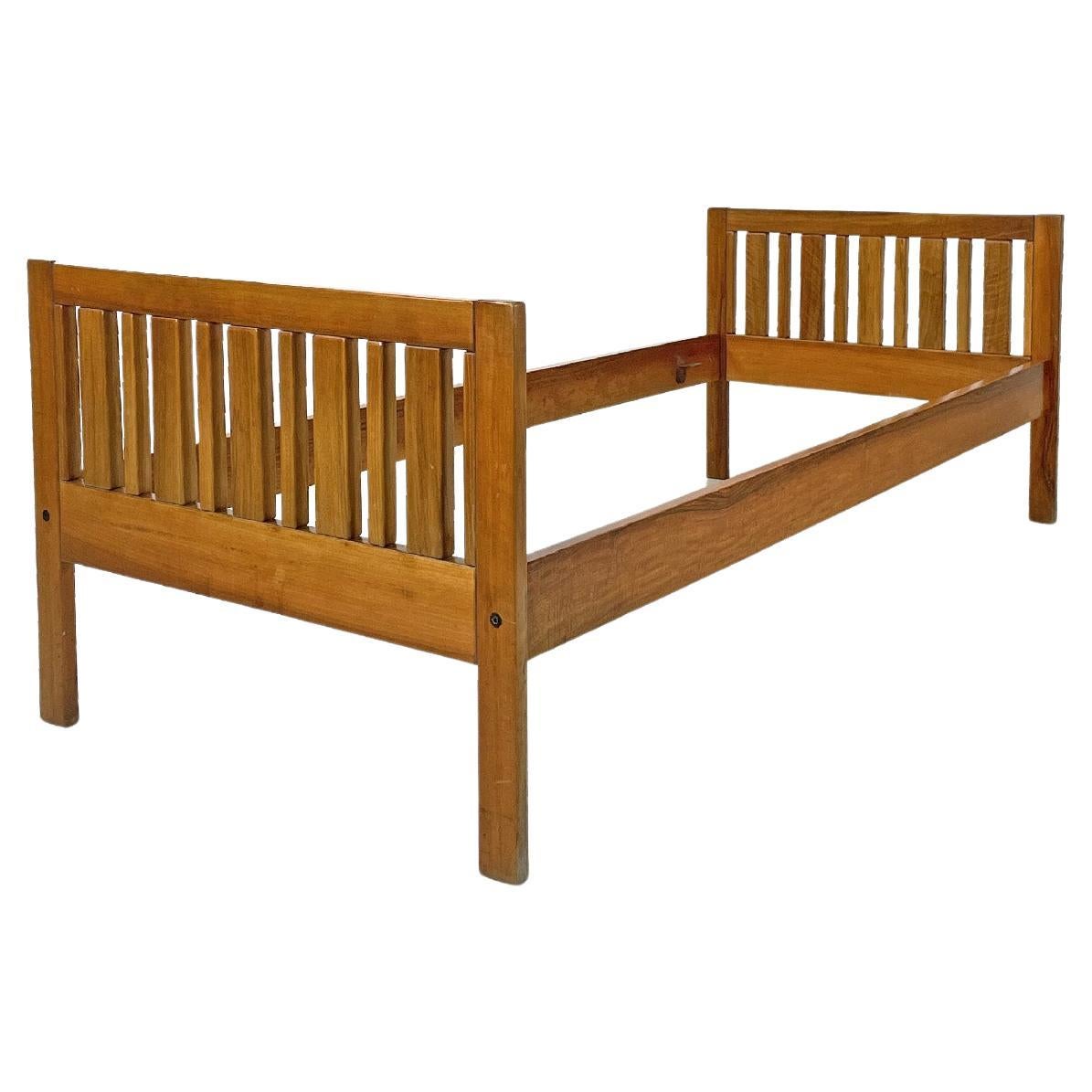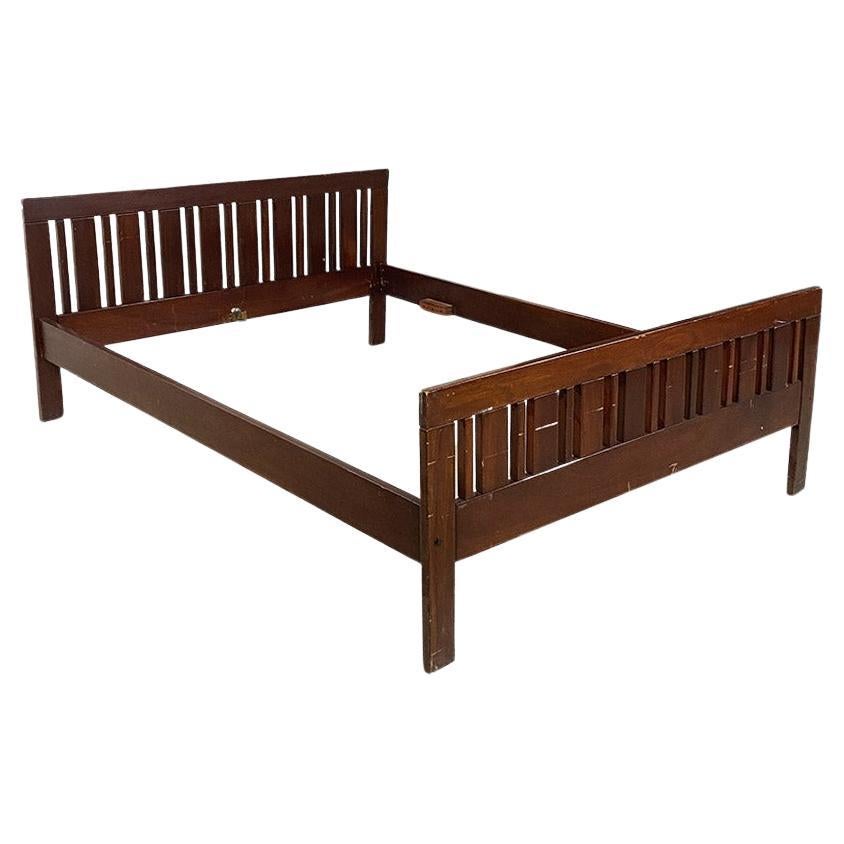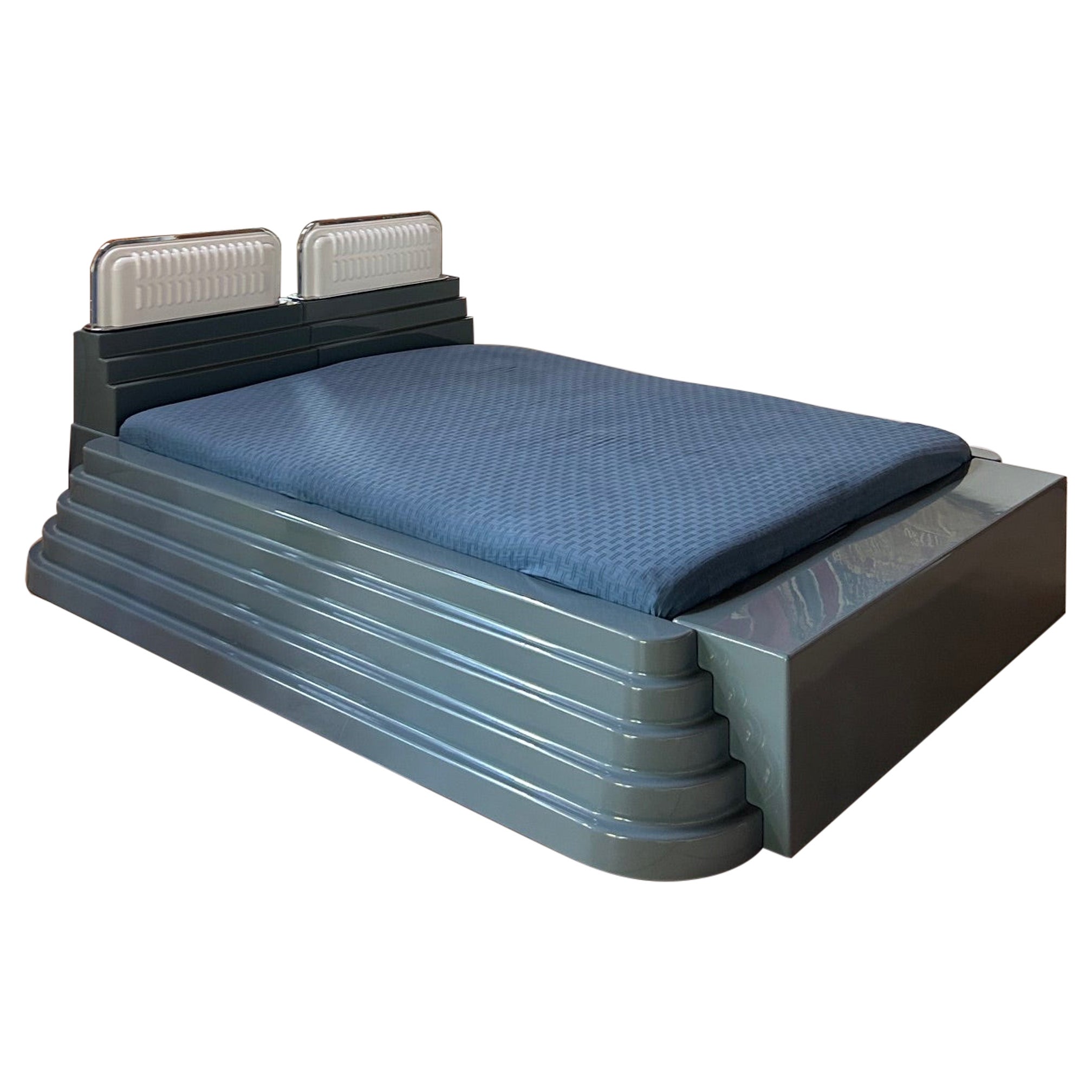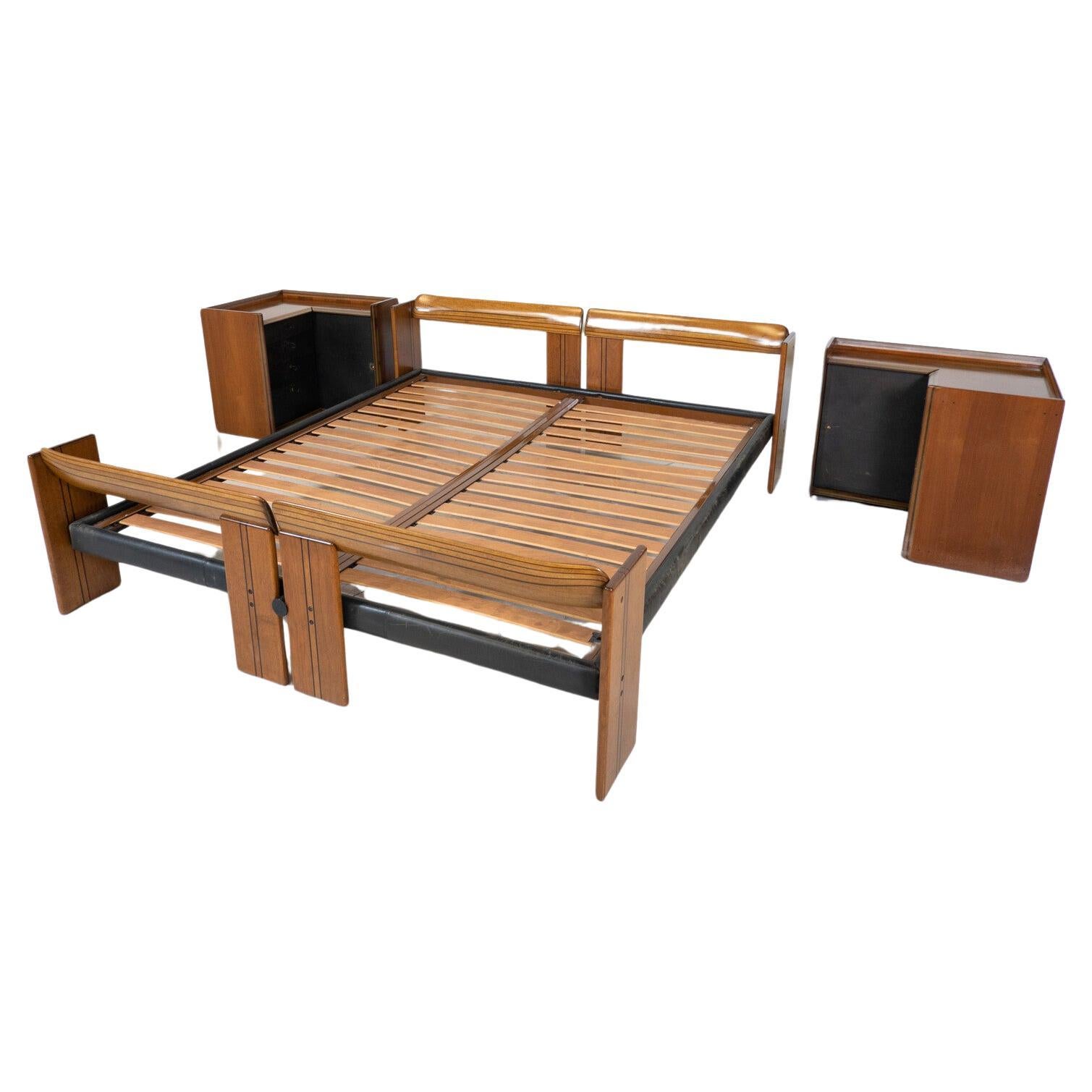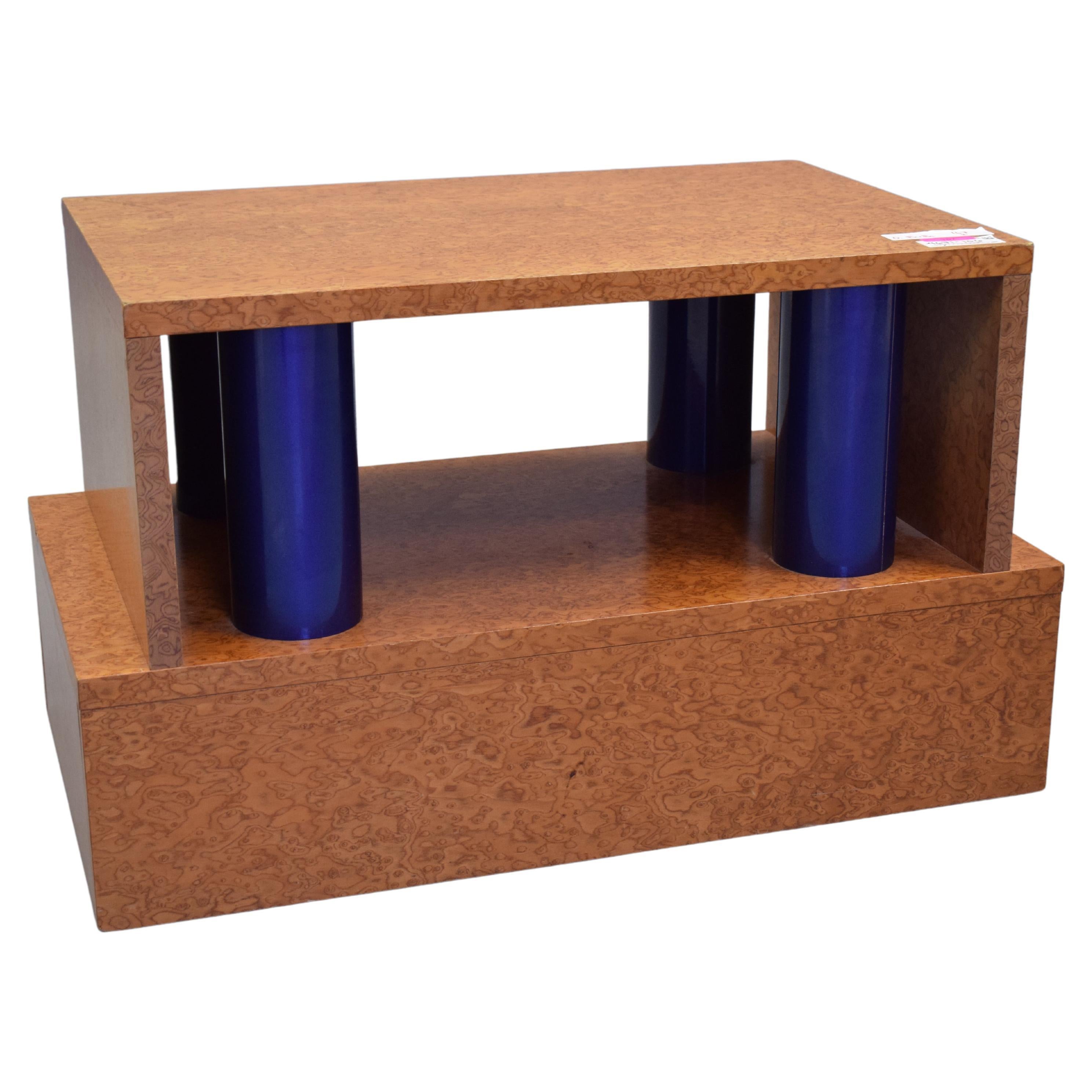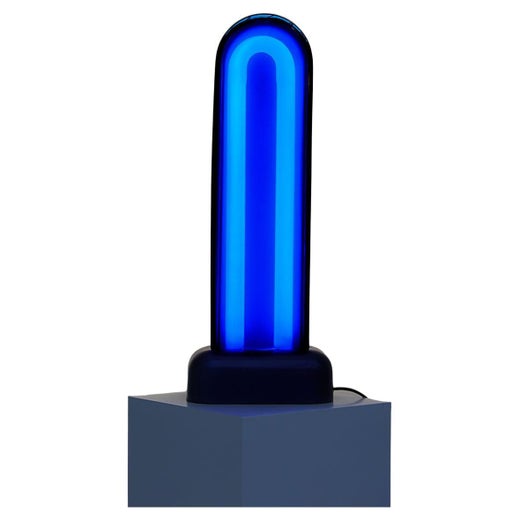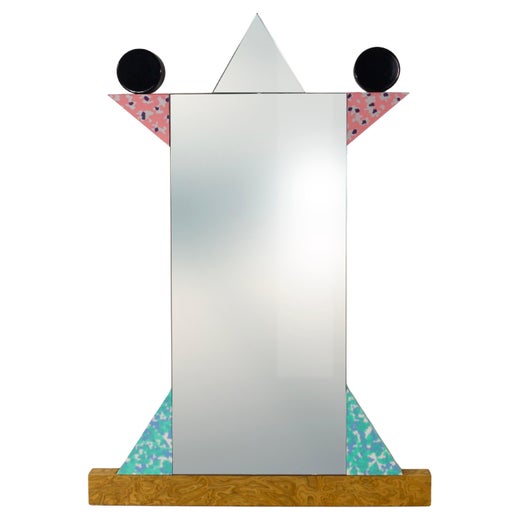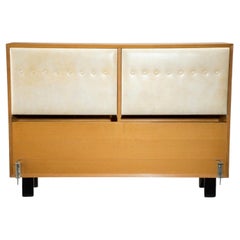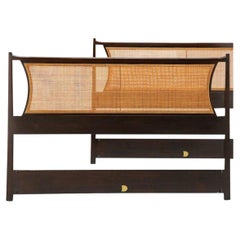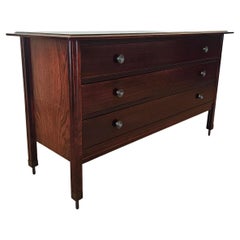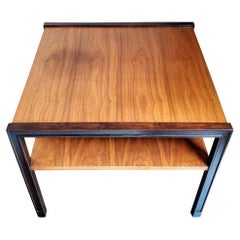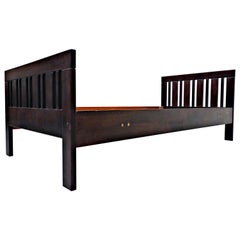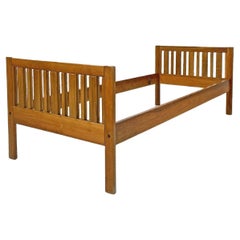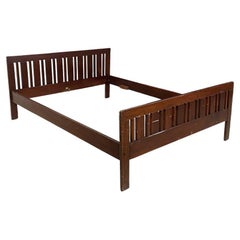Ettore Sottsass & Marco Zanini for Leitner Donau Collection Bed and Nightstand
About the Item
- Creator:Memphis Group (Workshop/Studio),Marco Zanini (Designer),Ettore Sottsass (Designer),Memphis Milano (Workshop/Studio)
- Dimensions:Height: 42.5 in (107.95 cm)Width: 40.5 in (102.87 cm)Depth: 84.75 in (215.27 cm)
- Sold As:Set of 2
- Style:Post-Modern (Of the Period)
- Materials and Techniques:
- Place of Origin:
- Period:1980-1989
- Date of Manufacture:circa 1988
- Condition:Wear consistent with age and use. Excellent original vintage condition. Very strong, sturdy, stable, structurally sound. Presents very well. May have minor wear consistent w/ age/use, including very minor lacquer loss to top edge of headboard, small loss to wood at one side rail. A+.
- Seller Location:Forney, TX
- Reference Number:1stDibs: LU5977233467062
Ettore Sottsass
An architect, industrial designer, philosopher and provocateur, Ettore Sottsass led a revolution in the aesthetics and technology of modern design in the late 20th century. He was a wild man of the Radical Design movement that swept Italy in the late 1960s and ’70s, rejecting rationalism and modernism in favor of ever-more outrageous imaginings in lighting and furniture such as mirrors, lamps, chairs and tables.
Sottsass was the oldest member of the Memphis Group — a design collective, formed in Milan in 1980, whose irreverent, spirited members included Alessandro Mendini, Michele de Lucchi, Michael Graves and Shiro Kuramata. All had grown disillusioned by the staid, black-and-brown “corporatized” modernism that had become endemic in the 1970s. Memphis (the name stemmed from the title of a Bob Dylan song) countered with bold, brash, colorful, yet quirkily minimal designs for furniture, glassware, ceramics and metalwork.
The Memphis Group mocked high-status by building furniture with inexpensive materials such as plastic laminates, decorated to resemble exotic finishes such as animal skins. Their work was both functional and — as intended — shocking.
Even as it preceded the Memphis Group's formal launch, Sottsass's iconic Ultrafragola mirror — in its conspicuously curved plastic shell and radical pops of pink neon — embodies many of the collective's postmodern ideals.
Sottsass created innovative furnishings for the likes of Artemide, Knoll, Zanotta and Poltronova, where he reigned as artistic director for nearly two decades beginning in 1958. His most-recognized designs appeared in the first Memphis collection, issued in 1981 — notably the multihued, angular Carlton room divider and Casablanca bookcase. As pieces on 1stDibs demonstrate, however, Sottsass is at his most inspired and expressive in smaller, secondary furnishings such as lamps and chandeliers, and in table pieces and glassware that have playful and sculptural qualities.
Sottsass left the Memphis Group in 1985 in order to concentrate on the growth of Sottsass Associati, a design and architecture consultancy he cofounded in 1980.
It was as an artist that Sottsass was celebrated in his life, in exhibitions at the Los Angeles County Museum of Art, in 2006, and the Philadelphia Museum of Art a year later. Even then Sottsass’s work prompted critical debate. And for a man whose greatest pleasure was in astonishing, delighting and ruffling feathers, perhaps there was no greater accolade. That the work remains so revolutionary and bold — that it breaks with convention so sharply it will never be considered mainstream — is a testament to his genius.
Find Ettore Sottsass lighting, decorative objects and furniture for sale on 1stDibs.
Memphis Milano
To many people, postmodern design is synonymous with the Memphis Group. This Italian collaborative created the most radical and attention-getting designs of the period, upending most of the accepted standards of how furniture should look. Today, the Memphis Milano brand, which is managed by Alberto Bianchi Albrici, still produces designs created by the group between 1981 and 1988.
The Memphis story begins in 1980, when Ettore Sottsass, then a beacon of Italian postmodernism, tapped a coterie of younger designers to develop a collection for the Milan Furniture Fair the next year, determined that all the new furniture they were then seeing was boring. Their mission: Boldly reject the stark minimalism of the 1970s and shatter the rules of form and function. (Sottsass’s Ultrafragola mirror, designed in 1970, embodied many of what would become the collective’s postmodern ideals.)
The group decided to design, produce and market their own collection, one that wouldn’t be restricted by concerns like functionality and so-called good taste. Its debut, at Milan’s 1981 Salone del Mobile, drew thousands of viewers and caused a major stir in design circles.
So as a record of Bob Dylan’s “Stuck Inside of Mobile” played on repeat, they took their name from the song, devised their marketing strategy and plotted the postmodern look that would come to define the decade of excess — primary colors, blown-up proportions, playful nods to Art Deco and Pop art. A high-low mix of materials also helped define Memphis, as evidenced by Javier Mariscal’s pastel serving trays, which feature laminate veneer — a material previously used only in kitchens — as well as Shiro Kuramata’s Nara and Kyoto tables made from colored glass-infused terrazzo.
An image of Sottsass posing with his collaborators in a conversation pit shaped like a boxing ring appeared in magazines all over the world, and Karl Lagerfield furnished his Monte Carlo penthouse entirely in Memphis furniture. Meanwhile, members like Andrea Branzi, Aldo Cibic, Michele de Lucchi, Nathalie du Pasquier, Kuramata, Paola Navone, Peter Shire, George Sowden, Sottsass and his wife, journalist Barbara Radice, went on to enjoy fruitful careers.
Some people think of the Milan-based collective as the design equivalent to Patrick Nagel’s kitschy screenprints, but for others Memphis represents what made the early 1980s so great: freedom of expression, dizzying patterns and off-the-wall colors.
Eventually, the Reagan era gave way to cool 1990s minimalism, and Memphis fell out of fashion. Sottsass left the group in 1985, and by 1987, it had disbanded. Yet decades later, Memphis is back and can be traced to today’s most exciting designers.
“As someone who was born in the 1980s, Memphis at times feels like the grown-up, artsy version of the toys I used to play with,” says Shaun Kasperbauer, cofounder of the Brooklyn studio Souda. “It feels a little nostalgic, but at the same time it seems like an aesthetic that’s perfectly suited to an internet age — loud, colorful and utilizing forms that are graphic and often a little unexpected.”
Find a collection of Memphis Milano seating, tables, decorative objects and other furniture on 1stDibs.
- ShippingRetrieving quote...Shipping from: Forney, TX
- Return Policy
More From This Seller
View AllMid-20th Century American Mid-Century Modern Beds and Bed Frames
Upholstery, PVC, Wood, Walnut
Mid-20th Century American Mid-Century Modern Beds and Bed Frames
Rattan, Mahogany
Mid-20th Century Italian Mid-Century Modern Commodes and Chests of Drawers
Bronze
Mid-20th Century American Mid-Century Modern End Tables
Brass
Early 20th Century American Art Deco Sideboards
Birch, Mahogany, Rosewood
Mid-20th Century American Mid-Century Modern End Tables
Brass
You May Also Like
Mid-20th Century Italian Mid-Century Modern Beds and Bed Frames
Wood
Vintage 1960s Italian Mid-Century Modern Beds and Bed Frames
Metal
Vintage 1960s Italian Mid-Century Modern Beds and Bed Frames
Hardwood
20th Century Italian Space Age Beds and Bed Frames
Aluminum
Vintage 1970s Daybeds
Leather, Wood
Vintage 1980s Austrian Coffee and Cocktail Tables
Wood
Read More
Paloma Elsesser’s Home Features This Ettore Sottsass Table
The Italian designer’s oeuvre extends beyond the iconic Ultrafragola mirror.
Ettore Sottsass Captures a Shooting Star in This Rare 1970s Floor Lamp
Before founding the Memphis Group, Sottsass bent the rules of lighting design with the wonderfully wavy Cometa.
